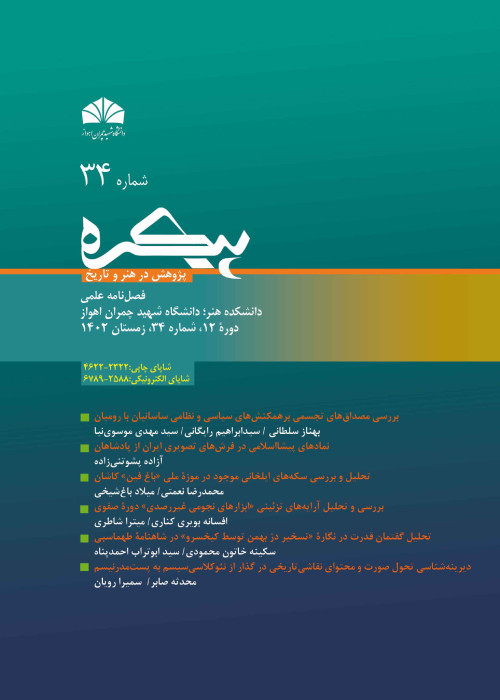Relationship between the Representative Aspects of Kamal-ol-Molk Style and 1380s and 1390s Iranian Painting Based on Wolfflin's Stylistic System
Following the decline of the hegemony of modernism from the late 1370s, representational painting in Iran became the main focus of the painting productions of the 1380s and 1390s. Undoubtedly, the re-emergence of this movement after the Kamal-ol-Molk tradition had its own external and internal reasons. But what needs to be considered in this reappearance is the analysis of the characteristics and peculiarities of this painting concerning the pictorial tradition of Kamal-ol-Molk, which owes itself to the European representational painting. The questions raised in this research are: From the perspective of Heinrich Wolfflin's stylistic system, what are the formal components of the Kamal-ol-Molk style in the representational painting of Iran in the 1380s and 1390s? What do these stylistic peculiarities have to do with representation methods in the history of European painting?
The present study aims to investigate and analyze the dominant stylistic features in contemporary Iranian representational painting and its relationship with the visual style of Kamal-ol-Molk.Research
This study is fundamental research and has applied a descriptive-analytical method, and the data is gathered using existing library resources and archives. The basis of this research is on the formalist approach and the application of theories of form and style by Heinrich Wolfflin on dual opposing principles (Linear and Painterly; Plane and Recession; Closed and Open form; Multiplicity and Unity; Clearness and Unclearness).
The use of Wolfflin's stylistic approach compared to the representational painting of Iran in the 1380s and 1390s showed that many of the visual aspects of Kamal-ol-Molk painting are based on images, details concentration, multi-space system, front views in line with frame level, and dominant linearity. This approach has a decisive and significant presence in the basic infrastructure of the representational painting of the 1380s and 1390s. These peculiarities are based more on a linear pattern (as opposed to painting) than on the painting perspective and the concept of space in the history of Western painting, the bases of which can be traced back to the Iranian painting tradition (exemplary form).
- حق عضویت دریافتی صرف حمایت از نشریات عضو و نگهداری، تکمیل و توسعه مگیران میشود.
- پرداخت حق اشتراک و دانلود مقالات اجازه بازنشر آن در سایر رسانههای چاپی و دیجیتال را به کاربر نمیدهد.


